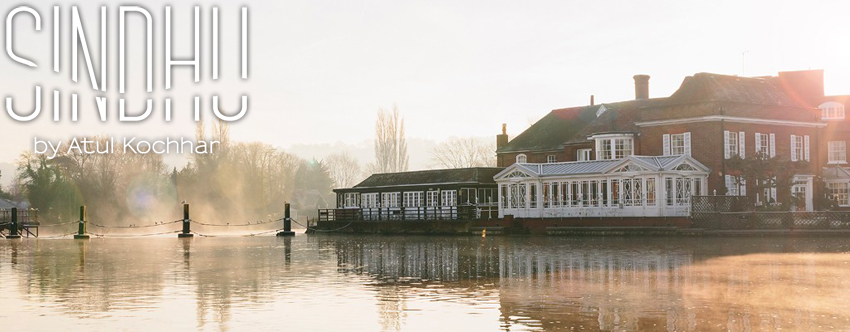
Atul Kochhar has been in the vanguard of transforming Indian food from the traditional curry house staples into the sophisticated, elegant cuisine of contemporary fine dining. Having won Michelin stars first at Tamarind (2001) and then at Benares (2007), his career has seen openings of Sindhu restaurants on three P&O cruise ships, a partnership with Jatindar Singh at Indian Essence in Orpington and, since December 2014, a franchise at Sindhu in the Compleat Angler Hotel in the historic Thameside town of Marlow, Buckinghamshire.
The 2017 Good Food Guide lists four entries with marks of 5/10 or above for this relatively small town, no mean achievement given the exacting standards of this publication. That “Marlow is the new Ludlow” is now indisputable. It has seen a veritable flowering of destination restaurants in the last decade, including the Hand and Flowers, the Coach, Vanilla Pod and the nearby Danesfield House Hotel. On a site once occupied by Aubergine, overseen by Michelin starred Billy Drabble, Sindhu is emulating its success with 6/10 in the GFG with two AA rosettes.
Aptly taking its name from the Sanskrit for the Indus River, Sindhu boasts commanding views of Marlow weir. Insulated from the sound of cascading waters, the carpeted dining room is a stylish blend of traditional features – stained glass on the leaded windows, dark wood panelling and real log fire – with more contemporary touches such mirrored columns, spotlighting and abstract canvasses which punctuate the green grey décor. Bold fabrics used in the lemon and turquoise upholstered chairs and in the glitzy banquette which runs the full length of the restaurant provide comfortable seating around well-spaced, polished dark wood tables.
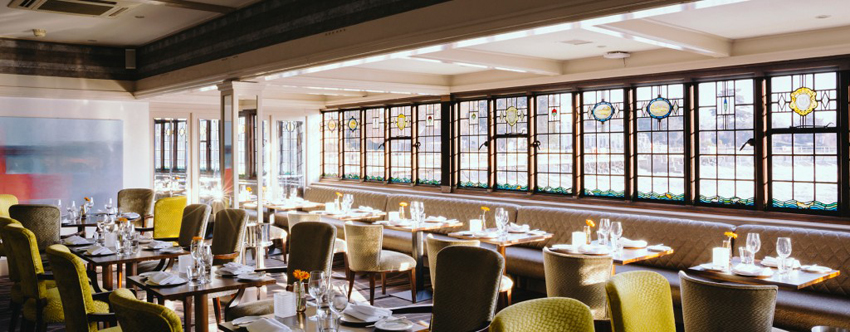
Just as the setting offers a mixture of old and new, so Atul Kochhar’s cuisine matches the authenticity of Indian cuisine – there is extensive research into the regional dishes of the subcontinent – with innovative modern British touches both in preparation and presentation. Spicing is subtle rather than bold, maximising flavour without excessive heat. Top quality ingredients are allowed to shine, with saucing enhancing their natural qualities. Timing is skilfully judged, whether in slow cooked or dishes needing less time. Combinations of ingredients can be unusual and exciting but always harmonious. The food is attractively displayed on a variety of surfaces including slate, wood and porcelain.
Menus include the full carte, featuring signature dishes such as soft shell crab, lamb shank and lamb cutlet, the highly popular seven course tasting menu (£65) and a good value weekday set lunch (at £19 for two courses and £22 for three). Prices are fair, given the outstanding quality of the ingredients, such as Scottish scallops, Atlantic halibut and Romney Marsh lamb, and the skilful, innovative cooking. Menu descriptions are sparse, listing the main components with little information of cooking techniques, thus allowing for an element of surprise when the dish is served.
Connoisseurs will be impressed by the select and informative wine list. There is a good selection from Old and New Worlds with excessive mark-ups being avoided. The cocktail list also includes six non-alcoholic options. The Ginger Feast, with pressed pineapple and fresh lime spiced with fiery ginger beer was especially refreshing, and a pleasant accompaniment to the delicate bite sized lentil poppadoms with a trio of mango, tomato and coriander chutneys which started the meal.
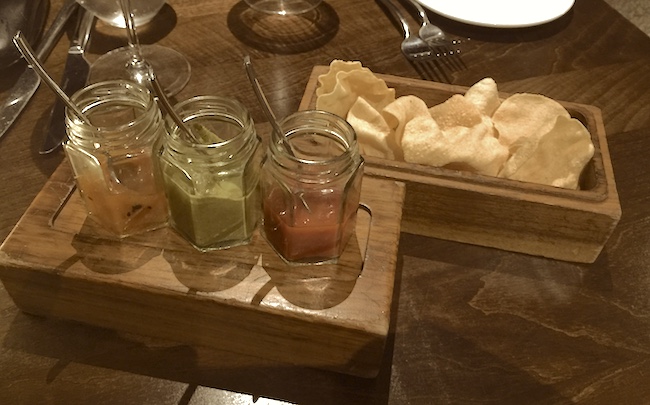
The tasting menu, which we noticed many diners were choosing, proved the perfect introduction for those unfamiliar with Sindhu’s repertoire.
An amuse bouche of leek and potato soup fused a classic English starter with gentle Indian spicing, tantalising the palate with moderate heat and a long finish.
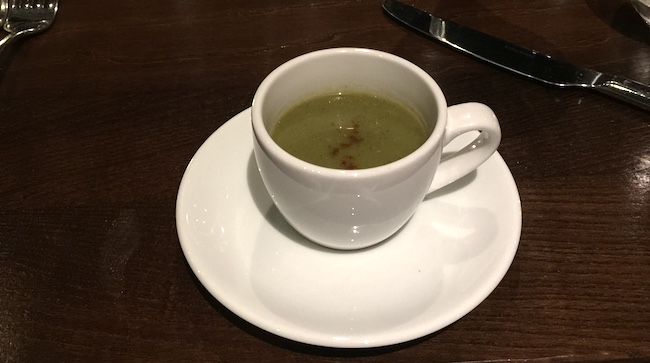
The first course of Aloo and Samosa Chaat, combined two staples from Northern India. This flavoursome dish of roasted sweet potato encased in crisp pastry, and crisp deep fried new potato was enlivened with dressings of yogurt, tamarind and mint, with a scattering of pomegranate seeds for sweetness and colour.
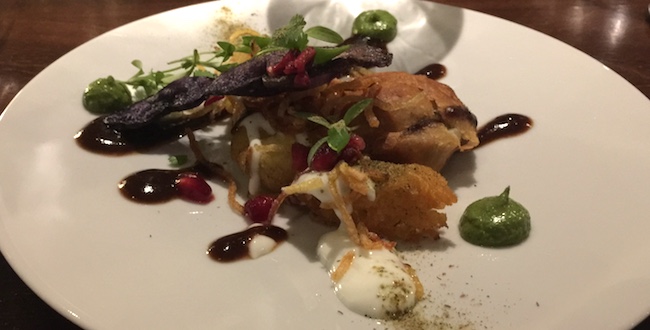
Next came Jal Tarang showcasing a large, beautifully fresh Scottish scallop, precisely timed to produce a caramelised crust and sweet, succulent flesh. What transformed this essentially modern British offering, with its velvety parsnip puree and deep fried crisps into a unique Kochhar creation was the spicy but not overpowering parsnip pickle, which lifted the whole dish. Set on dark slate, the contrasting colours of the ingredients also made this a visually appealing dish.
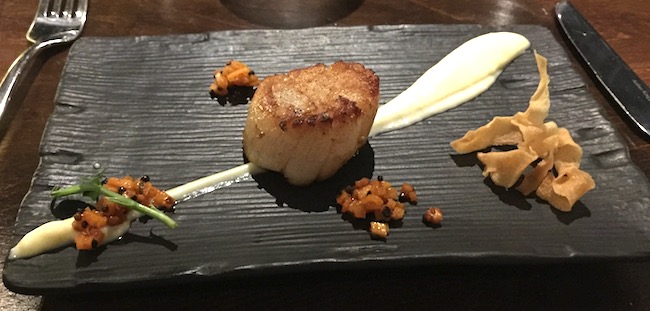
Equally accomplished was Meen Moilee, reflecting southern Indian influences. Here a fillet of Stone Bass – underrated but equally delicious as its better known cousin Sea Bass – was cooked to perfection with crisp skin and flakes of meltingly soft flesh. The balance of this dish was well judged, the freshness of the fish contrasting with the earthiness of a crushed potato and beetroot quenelle, with a rich coconut sauce, flecked with fresh coconut, bringing the other elements together well.
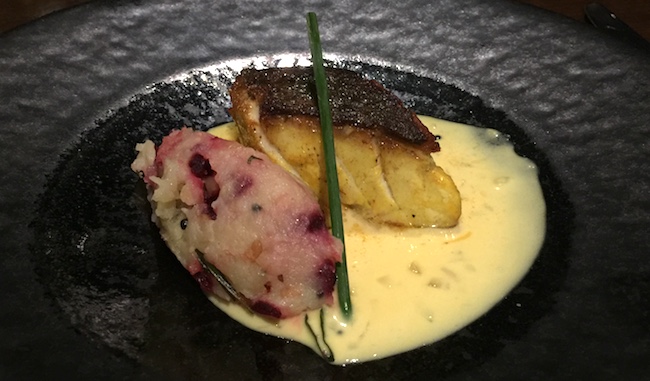
Lime sorbet provided a cooling citrus hit before the meat courses. Although, sadly, sorbets as an intermediary course has almost disappeared from modern British tasting menus, here it is entirely appropriate, allowing the palate to revive from the variety of tastes and textures which preceded it.
A northern dish of Murgh Makhanwala presented strips of succulent, smoky tandoori chicken supreme enhanced by a gently spiced and sweet Tomato Pulao, laced with butter and saffron. Raisin pilaf and paneer with spinach proved excellent foils for the richness of the chicken, soaking up the complex flavours of the sauce.
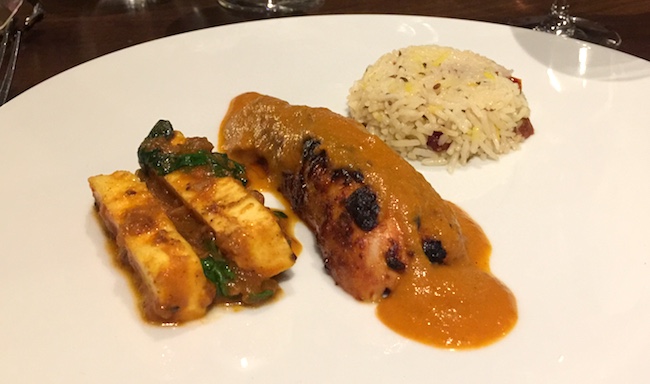
Erachi Chettinaad from the Tamil Nadoo region in south eastern India has proved to be a popular signature dish. A grilled cutlet from a Romney Marsh lamb, noted for its extra marbling, had been marinated in a Chettinaad mix of 21 spices to produce a sauce which, amazingly, complemented rather than overwhelmed the juicy, full flavoured lamb. Again, such deftness in the use of spices is the hallmark of Atul Kochhar’s gastronomy. A portion of dry polenta provided the necessary starch element whilst a dressed Kachumber salad of cucumber, tomato and bean sprouts and mint raita added a crisp freshness to offset the more aromatic elements.
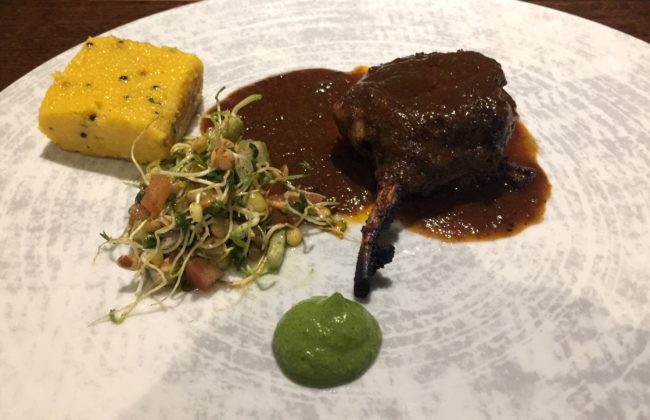
Chapa Pulusa, a southern dish, featured a grilled fillet of Atlantic Halibut, the firm flesh of which was suitably partnered with caulifower Pakora and chickpeas. A Tamarind sauce, with its sweet and sour qualities, worked well with the robust textures of the fish, vegetable and pulse.
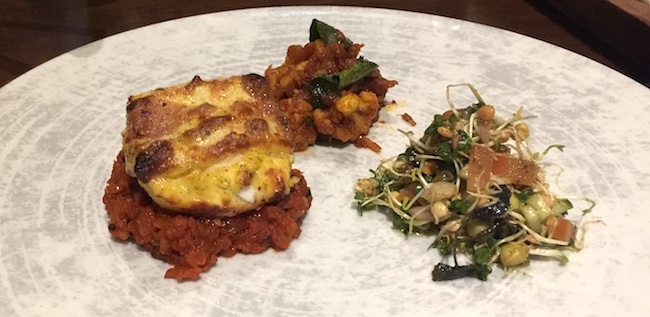
The accompanying warm nan bread was soft and light, the perfect vehicle for mopping up the delectable sauces and the slow cooked Black dahl with its deep, smoky flavour.
The final course was a trio of well executed desserts. Bhapa Doi, a delicate yogurt cheesecake with rose water added sparingly so as not to be overpowering. Mango Kulfi was light, creamy and full of fruit flavour. And chocolate and passion fruit disc was dark, intense and fragrant.
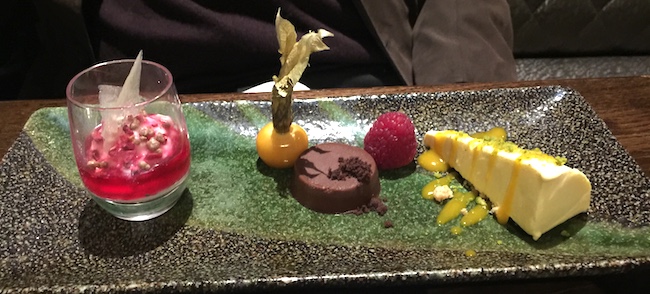
Coffee and petit fours completed this memorable meal, the service of which was seamless, dishes arriving with a well-judged interval between courses. It was overseen by deputy manager Jaspreet who was welcoming and informative, especially on the origin of the dishes. Although we only drank a glass of red wine with our meat courses, it was clear that Mark, the Sommelier who was busy serving other tables the full flight of wines, was an accomplished practitioner of his craft.
Overall, Sindhu is a class act in all respects, a distinctive addition to the Marlow food scene. The lively buzz of contented diners in a relaxed atmosphere reflects a strong local following with increasing numbers from further afield. A healthy weekday evening average of 30-35 covers, and full capacity at weekends, clearly testify to the popularity of Sindhu in a highly competitive market in the affluent Thames Valley. Fine Dining Guide will visit again to sample other dishes from the carte and will monitor Sindhu’s progress in the guides with interest.



